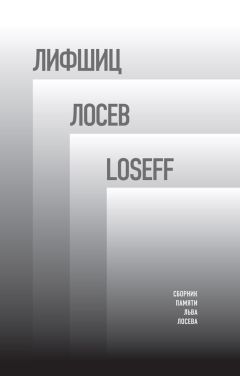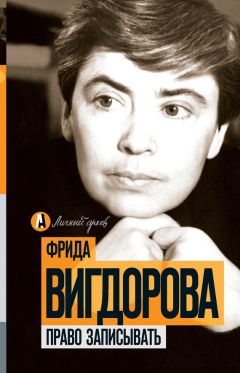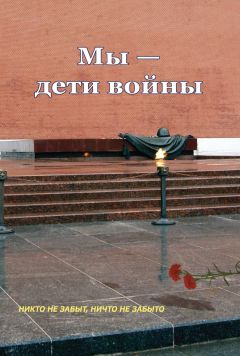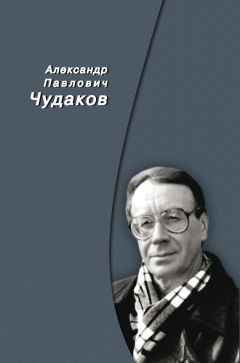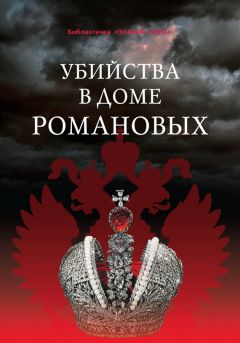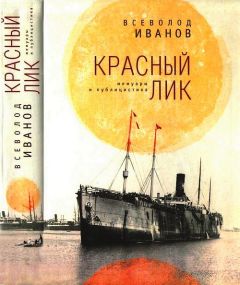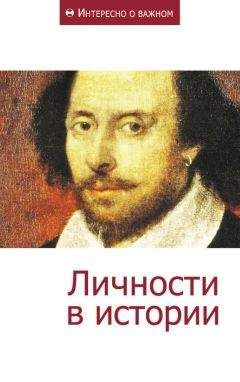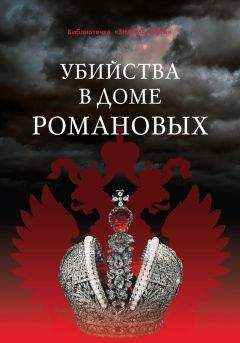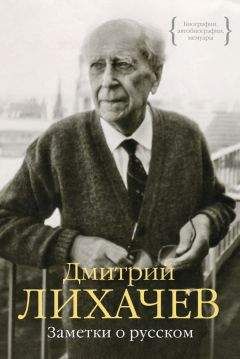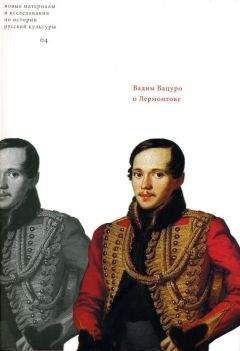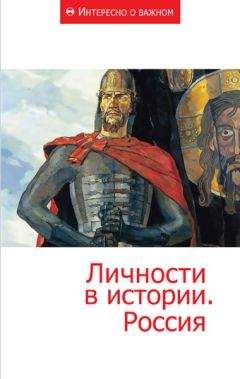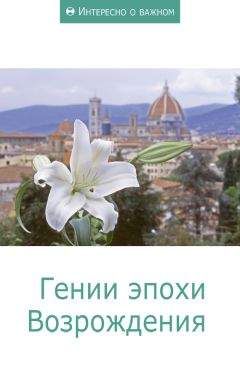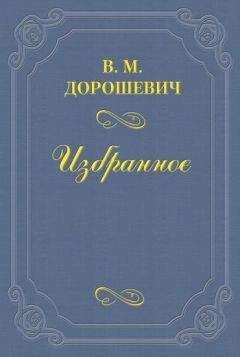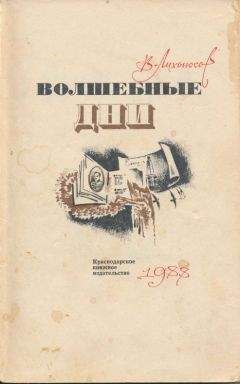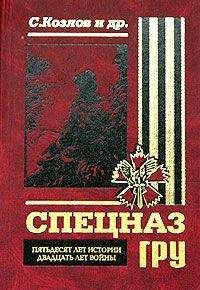Сборник статей - Россия и США: познавая друг друга. Сборник памяти академика Александра Александровича Фурсенко / Russia and the United States: perceiving each other. In Memory of the Academician Alexander A. Fursenko / Russia and the United States: perc

Все авторские права соблюдены. Напишите нам, если Вы не согласны.
Описание книги "Россия и США: познавая друг друга. Сборник памяти академика Александра Александровича Фурсенко / Russia and the United States: perceiving each other. In Memory of the Academician Alexander A. Fursenko / Russia and the United States: perceiving each o..."
Описание и краткое содержание "Россия и США: познавая друг друга. Сборник памяти академика Александра Александровича Фурсенко / Russia and the United States: perceiving each other. In Memory of the Academician Alexander A. Fursenko / Russia and the United States: perceiving each o..." читать бесплатно онлайн.
Этот сборник статей и материалов посвящен памяти выдающегося российского историка Александра Александровича Фурсенко (1927–2008). Его тематика определяется основными научными направлениями, разработкой которых занимался он сам. Сборник открывается мемориальным разделом, в котором публикуется несколько очерков, посвященных различным эпизодам насыщенной событиями жизни А. А. Фурсенко. Основной объем сборника занимают три тематических раздела, в которых сгруппированы статьи российских американистов по различным проблемам истории США, статьи американских русистов по истории России и статьи по истории русско-американских отношений, написанные как отечественными, так и зарубежными историками. Большой интерес представляют также впервые публикуемые здесь документы, принадлежащие перу А. А. Фурсенко. Это и личные письма, повествующие об обстоятельствах, при которых он впервые оказался в частном архиве семейства Рокфеллеров, и официальный отчет о его пребывании в США двадцать лет спустя.
Three essays on pogroms in the Russian Northwest find that the great resentment of Russian and/or Polish domination ameliorated Lithuanian and Belorussian relations with Jews in their region.[212] These borderlands of both the Empire and the Pale, if compared to the greater violence of the southern and southwestern Pale, are distinguished by the relative absence of pogroms. In contrast to the Habsburg lands, where Jews were perceived as allied with the resented German or Hungarian overlords, here Jews were seen as allies against Russian and Polish domination. The article by Staliūnas and Sirutavičius explains the outburst of anti-Jewish violence during the Nazi occupation as wholly due neither to Nazi influence nor to a native antisemitism. Lithuanians lived through the Russian imperial and interwar eras in relatively peaceful coexistence with Jews, given the size of the Jewish population and the antisemitism of neighboring regions. It was mostly the trauma of Soviet occupation in 1939 and the divergence of political leanings between Lithuanians and Jews that precipitated mass anti-Jewish violence aimed at Communism considered as a Jewish enterprise.
Klaus Richter’s detailed study of a small pogrom in eastern Lithuania in 1905 does not contradict those findings, but uncovers nuances that shed light on the nature of pogroms far beyond Lithuania. In exploring the causes of fires in the shtetl of Duseto that precipitated a pogrom after destroying several buildings owned by local peasants, Richter leaves open the possibility that Jews could have started them, as the peasants insisted, despite the findings of an official investigation that exonerated them. He does not contend that Jews started the fire, only that Jewish commercial competitors were capable of such tactics against rival peasant merchants, suggesting that the kind of aggressive self-assertion described in Petrovsky’s shtetl study was probably still alive in shtetl’s of the 1905 era. The willingness of Jews in remote Duseto to assert and defend themselves is related to a second suggestive observation by the author, namely that such behavior surprised the police, who
against the backdrop of the large scale pogrom in Kishinev, the police in Lithuania grew extremely cautious, as large crowds of Lithuanian Jews gathered to mourn their Bessarabian brethren. This time, the officials feared the Jews more than the Lithuanian peasants… The police superintendent (pristav) of Vilnius reported on the high degree of determination among Jews to strike back against pogromists beyond the limits of their own shtetls. On May 25, 1903, for instance, he encountered a crowd of more than five hundred Jews who wanted to make their way to nearby Vileyka… where allegedly there had been rumors of an impending pogrom. The superintendent dispersed the crowd with the aid of mounted policemen. With such measures, the police reinforced the conviction among peasants that the tacit rules of anti-Jewish riots excluded the ability of Jewish resistance.
Richter sees Jewish self-defense as breaking an unwritten code about how pogroms were supposed to work, thereby angering the pogromists and providing them an “alibi for murder”.[213] Quoting a German study, he suggests that Jewish resistance broke with the “historic pattern of anti-Jewish violence [that] demanded submission, huddling in houses, a passive acceptance of the script of a ritual drama”.[214] The notion of pogroms as the enactment of a social ritual with its own rules has been mentioned by others, but has yet to receive the attention that it would seem to deserve.[215]
These diverse essays on anti-Jewish violence explore important new avenues of inquiry, seconding and reinforcing John Klier’s conception of pogroms as a prism through which to examine Jewish-gentile relations in all their complexity. The result is a view of pogroms that makes them part as much of Russian (Czech, Romanian, Galician, etc.) history as of Jewish history. Antisemitism was the common coin of the violence, to be sure, but it took many forms, combining with and shaping itself to diverse other grievances and locales and performing varying functions for the non-Jewish populations involved. Like Klier’s study, the essays in the pogrom collections show Jewish-gentile relations to have been an interactive process. Klier’s embattled Jewish elites interacted with Russia’s highest governing authorities, their principal opponents. In Austria-Hungary Jews had the protection of the Habsburg authorities to a degree not possible in Russia. However, pursuing their own interests during a period of growing nationalist exclusionism, they also encountered violent opposition, though more sporadically and on a smaller scale than occurred in Russia.
All this argues against efforts to find a single definition of the causes and meaning of pogroms. At the same time, we are not left with the prospect of treating every pogrom as a unique event. These essays suggest instead that anti-Jewish violence can be most accurately understood in specific historical contexts, be they Klier’s world of relations between government policy, personnel, and Jewish leadership, or the clash of East European new nationalisms with native Jewish populations, or Frankel’s diachronic study of Russian-Jewish nationalist and socialist politics coming to birth in a failing empire beset by revolutionary oppositions. All three of these contexts were present in microcosm in Kiev, where Jewish leaders interacted with the city’s political and business elite, where Jews became political scapegoats for a rising nationalist movement, and where they responded with new political movements of their own, both moderate and radical.
The studies of Meir, Hillis, and Petrovsky highlight other historical aspects of anti-Jewish violence, other differences that time and place have made in its quality and effect. Whether Kiev’s Jews represented some kind of Jewish metropolis, their history of both success and trauma was clearly the product of the specific restrictions and opportunities that their unique position in Kiev presented them. By contrast, Petrovsky’s study of the smaller towns and settlements in Kiev’s hinterland suggests that the violence Jews suffered in those locales was tempered by greater routine and stability and a simpler rivalry with a gentile population that shared their shtetl residency and most of the same rural hardships. Although this did not rule out violent treatment by gentile neighbors, it was part of a social arrangement in which Jews stood on a more equal footing with them than was possible in large, impersonal places like Kiev.
Taken together, the works considered here signal a new approach to the history of Russian Jews in the late imperial period. They argue that the growing intensity of anti-Jewish violence in the 1880–1914 period was due to much more than the preachings of antisemitic ideologues and that pogrom histories need to be constructed on the basis of a more detailed and more holistic consideration of specific events.[216] They suggest greater recognition is due the fact that Jews took an active hand in providing for their own defense and well-being and, while certainly not deserving of the violence visited on them, were not wholly passive and innocent victims of hostile Slavs and Christians. They show that the origins of anti-Jewish violence should be sought in the interactive relation between Jews and gentiles, however asymmetric and dysfunctional, and not exclusively in the hostility of Judeophobic rioters, even though their prejudice, phobias and violent overreaction made them the usual, principal initiators of the violence.
Alfred J. Rieber. Social and Political Fragmentation in Imperial Russia on the Eve of the First World War[217]
That the strains and trauma of the First World War contributed to the collapse of the tsarist monarchy is a truism that leaves unanswered several interrelated questions. Why did the collapse of old regime occur so suddenly in the capital and then spread so rapidly throughout the rest of the country; and why did it fail to generate any visible measure of support from its erstwhile defenders to restore it? Finally, why did Provisional Government collapse so rapidly in its turn, giving way to a complex smuta (civil strife) among multiple political contenders for power? This essay seeks to address these questions by examining the particular characteristics of change in the deep structures of imperial Russian society and politics in the decades leading up to 1914.
In the two centuries from Peter the Great to the First World War, the autocratic rulers and the ruling elites displayed a remarkable flexibility in responding to the foreign and domestic challenges to the security and stability of the state. In constructing a multi-cultural empire, they experimented in creative ways in attempting to assimilate newly conquered territories on the periphery of the center of their power. The great bursts of domestic reform under Catherine II, Alexander I and Alexander II were connected by a thin membrane of smaller changes and preparatory activities especially in the field of education of the social elites. Thus the process of reform was continuous, although its rhymes were irregular and the work as envisaged by the reformers often frustrated by entrenched interests. Nor did the innovations abolish existing institutions and long established practices. Instead they were accretions, increasingly weighing heavily on the body politic and social structure. Consequently, the process of state building was interrupted and incomplete to the very end of the old regime. It was due to the underdeveloped institutions of the empire and the arbitrary, centralized nature of the reforms combined with the limited resources of the autocracy to implement them that produced the effect of laying down of sedimentary strata, imposing new social and political forms on the old. At the same time, the pressures exerted by rapid economic change and the shock of military defeat in 1905 had the simultaneous and cumulative effect of intensifying fragmentation within these separate layers of society and state administration. By 1914 the social and political forces of the Empire were deeply divided and ill-prepared to withstand the trauma of modern war.
This essay seeks to explore four aspects of the layering of the archaic and the modern and the fragmentation of society and politics in the evolution of the Russian state and society as a consequence of the belated and uneven appearance in the course of Russian history of four great transformations experienced by all the major European powers during the previous century. The first of these was the industrial revolution and the formation of an integrated capitalist economy; the second was a political revolution which overturned absolutist rule in England, the Netherlands, France and much of the rest of Europe west of Prussia and the Habsburg lands by the mid nineteenth century; the third was the national state building project which culminated in the unification of the fragmented German and Italian states, the independence and fusion of Moldavia and Wallachia into a Rumanian state, the fusion of Eastern Rumelia with Bulgaria and the enlargement of Greece; the fourth was the rapid growth of urban society where intermediate social groupings, traditionally but misleadingly reified into the bourgeoisie and proletariat, challenged the political and cultural preeminence of the landed nobility.
Historians continue to debate the extent to which these transformations weakened or destroyed the institutions of the old regime throughout Europe. Arguably, every state retained pockets of “feudal survivals”. Industrialization began as a regional phenomenon and penetrated slowly from urban to remote rural and mountain areas; representative institutions and responsible ministries were slow to evolve toward liberal democracies; national integration proceeded gradually even in France. The landed nobilities of Europe continued to occupy high positions in government and commanded the armies of all the major powers; their social values and cultural standards continued to serve as models for much of the rest of society down to 1914. It might be said that every European state was following its “special path” (Sonderweg or особый путь). Or contrariwise, that all of them were “normal”. But that would be to bait a deadly historiographical trap. At a certain level of analysis, every European society was “special” and by 1914 all of them contained (and often shared) similar social, political and cultural features that might characterize them as normal. Moreover, the idea of a path carries teleological implications that should be resisted. The only solution to the problem lies in comparative history. But there is insufficient space for that in this paper. All that can be done is to assert and then attempt to document that the Russian Empire participated in all these four major transformations but that the rhythm of change was sufficiently different from the other major belligerent powers to help explain why it collapsed so suddenly in the midst of the war before its armies had been decisively defeated on the battlefield unlike what happened to the German, Habsburg and Ottoman Empires. This paper argues that four phenomena defined the peculiarities of Russia’s historical experience before 1914: 1) a multiplicity of social identifications; 2) the uneven and belated development of Russian capitalism; 3) the fragmentation and particularism of the big social aggregations; and 4) the fragmentation of politics.
The Multiplicity of Social IdentificationsEver since the reign of Peter I (“the Great”) the tsar and the ruler and his/her closest advisers had sought unsuccessfully to impose order from above on the variety of social identifications inherited from Muscovite Russia. Peter’s introduction of service ranking, Catherine’s attempt to create an intermediate urban class, Nicholas I belated codification of the soslovie system, the steps toward a common citizenship advanced by the reformers under Alexander II and again after the revolution of 1905 were, at best, only partial successes. From below people resisted or, as the large “floating” population testified, evaded the categories invented or imposed from above. Moreover, agents of autocracy often failed to implement or openly contradicted imperial legislation aimed at fixing the social order. Within the population there was abundant evidence of an insufficient awareness of one’s assigned place in society, a lack of self-consciously belonging to a group that was externally defined by its socio-economic condition (as a class) or its ethno-linguistic characteristics (as a nationality).
Конец ознакомительного фрагмента.
Текст предоставлен ООО «ЛитРес».
Прочитайте эту книгу целиком, купив полную легальную версию на ЛитРес.
Безопасно оплатить книгу можно банковской картой Visa, MasterCard, Maestro, со счета мобильного телефона, с платежного терминала, в салоне МТС или Связной, через PayPal, WebMoney, Яндекс.Деньги, QIWI Кошелек, бонусными картами или другим удобным Вам способом.
Подписывайтесь на наши страницы в социальных сетях.
Будьте в курсе последних книжных новинок, комментируйте, обсуждайте. Мы ждём Вас!
Похожие книги на "Россия и США: познавая друг друга. Сборник памяти академика Александра Александровича Фурсенко / Russia and the United States: perceiving each other. In Memory of the Academician Alexander A. Fursenko / Russia and the United States: perceiving each o..."
Книги похожие на "Россия и США: познавая друг друга. Сборник памяти академика Александра Александровича Фурсенко / Russia and the United States: perceiving each other. In Memory of the Academician Alexander A. Fursenko / Russia and the United States: perceiving each o..." читать онлайн или скачать бесплатно полные версии.
Мы рекомендуем Вам зарегистрироваться либо войти на сайт под своим именем.
Отзывы о " Сборник статей - Россия и США: познавая друг друга. Сборник памяти академика Александра Александровича Фурсенко / Russia and the United States: perceiving each other. In Memory of the Academician Alexander A. Fursenko / Russia and the United States: perc"
Отзывы читателей о книге "Россия и США: познавая друг друга. Сборник памяти академика Александра Александровича Фурсенко / Russia and the United States: perceiving each other. In Memory of the Academician Alexander A. Fursenko / Russia and the United States: perceiving each o...", комментарии и мнения людей о произведении.







